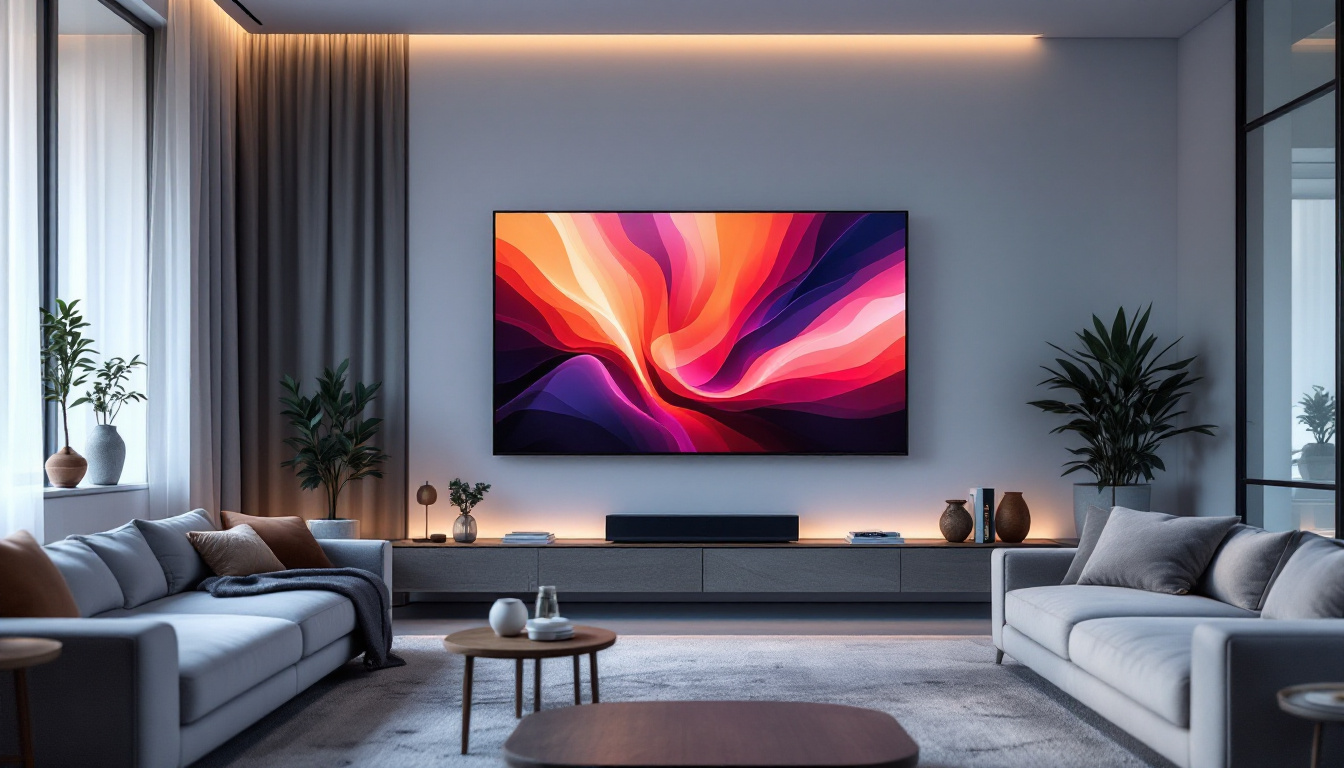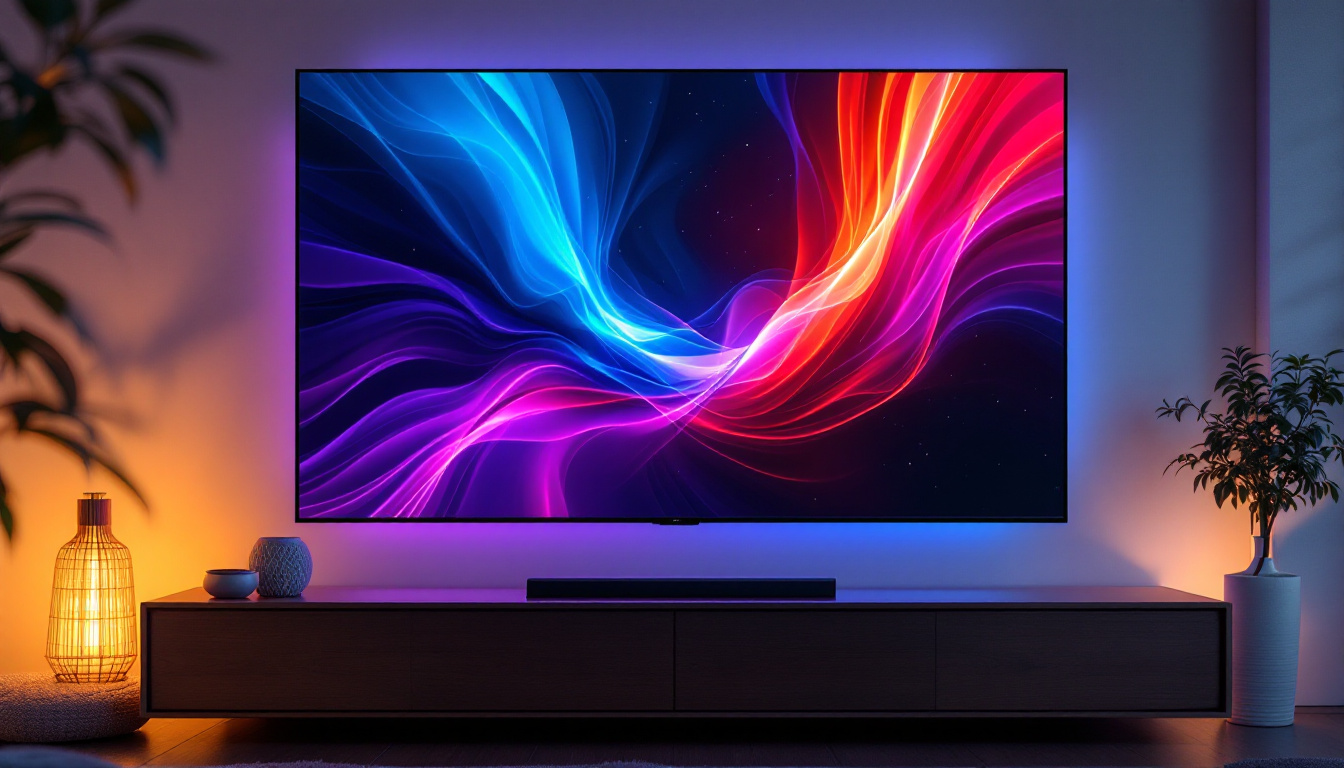Plasma Display Vs LED: LED Display Explained
In the ever-evolving world of display technology, consumers are often faced with the dilemma of choosing between different types of screens. Among the most popular options are plasma displays and LED displays. Each technology has its unique characteristics, advantages, and disadvantages. This article delves into the differences between plasma and LED displays, providing insights to help consumers make informed decisions.
Understanding Plasma Displays
Plasma displays have been a significant player in the television market, especially during the early 2000s. Utilizing small cells filled with ionized gas, plasma displays produce images through a process of electroluminescence. When electricity is applied, the gas emits ultraviolet light, which then excites phosphors to create visible images. This innovative technology was a game-changer in the realm of visual displays, offering a viewing experience that was previously unattainable with older technologies such as CRTs (cathode-ray tubes).
As the market evolved, plasma displays were celebrated for their ability to deliver larger screen sizes without compromising on image quality. This made them particularly popular for home theaters and large venues, where the immersive experience of a big screen could be fully appreciated. The combination of size and quality allowed viewers to enjoy films and sports events in a way that felt closer to being in a cinema or stadium, thus enhancing the overall entertainment experience.
Advantages of Plasma Displays
One of the most notable advantages of plasma displays is their exceptional color accuracy and contrast ratios. The ability to produce deep blacks and vibrant colors makes them a favorite among movie enthusiasts and gamers. Additionally, plasma screens offer wide viewing angles, ensuring that the picture remains consistent regardless of where one is sitting in the room. This feature is particularly advantageous in social settings, where multiple viewers can gather around a screen without losing the quality of the image.
Another significant advantage is the performance in low-light conditions. Plasma displays excel at rendering dark scenes, making them ideal for watching films in dimly lit environments. Furthermore, they often have faster response times, reducing motion blur during fast-moving scenes. This is especially beneficial for action-packed movies or fast-paced video games, where clarity and detail are crucial for an engaging experience. The technology behind plasma displays allows for a more fluid motion representation, making them a preferred choice for those who prioritize performance in dynamic visual content.
Disadvantages of Plasma Displays
Despite their advantages, plasma displays come with a few drawbacks. One major concern is their susceptibility to burn-in, a phenomenon where static images can leave a permanent mark on the screen. This can be particularly problematic for users who frequently watch channels with logos or play video games with static HUDs. To mitigate this issue, manufacturers have incorporated various technologies, such as pixel shifting and screen savers, but the risk remains a consideration for potential buyers.
Additionally, plasma displays are generally heavier and consume more power compared to their LED counterparts. This can lead to higher electricity bills and may pose challenges during installation due to their weight. The increased power consumption is also a factor in the environmental impact of plasma technology, as energy efficiency becomes a growing concern in consumer electronics. Lastly, the production of plasma displays has decreased significantly, making them less accessible in the current market. As manufacturers shift focus to LED and OLED technologies, enthusiasts may find it increasingly difficult to source new plasma models, leading to a potential decline in the community of dedicated plasma display users.
Exploring LED Displays
LED displays, on the other hand, have gained immense popularity due to their energy efficiency and versatility. Unlike plasma displays, LED screens utilize light-emitting diodes to illuminate the screen. This technology is often combined with LCD (Liquid Crystal Display) panels, resulting in a display that is thinner, lighter, and more energy-efficient.
Advantages of LED Displays
One of the primary advantages of LED displays is their energy efficiency. Consuming significantly less power than plasma displays, LED screens are environmentally friendly and cost-effective in the long run. This efficiency is particularly beneficial for consumers who use their screens for extended periods.
LED displays also boast a longer lifespan. Typically, they can last up to 100,000 hours, making them a more durable option for consumers. Additionally, advancements in LED technology have led to improved brightness levels, allowing for better performance in well-lit environments.
Disadvantages of LED Displays
While LED displays have many advantages, they are not without their drawbacks. One notable disadvantage is the potential for poorer color accuracy and contrast ratios compared to plasma displays. Although high-end LED models have made significant strides in this area, some budget options may still struggle to achieve the same level of performance.
Another issue is the limited viewing angles. LED displays can suffer from color distortion and brightness loss when viewed from an angle, which may be a concern for larger viewing groups. Additionally, some users report motion blur during fast-paced scenes, which can detract from the viewing experience.
Comparative Analysis: Plasma vs. LED
When comparing plasma and LED displays, it’s essential to consider various factors, including picture quality, energy consumption, lifespan, and price. Each of these factors can significantly influence the decision-making process for consumers.
Picture Quality
In terms of picture quality, plasma displays often hold the edge, particularly in dark environments. Their ability to produce deep blacks and vibrant colors makes them a preferred choice for home theaters. However, high-end LED displays have made significant improvements and can deliver impressive picture quality, especially in bright rooms.
Energy Consumption and Lifespan
LED displays are the clear winner when it comes to energy efficiency. They consume less power and have a longer lifespan, making them a more sustainable choice for consumers. Plasma displays, while offering superior picture quality, tend to consume more energy and have a shorter lifespan, which can be a concern for environmentally conscious buyers.
Price Considerations
Price is another critical factor to consider. Generally, LED displays are available at a wider range of price points, making them accessible to a broader audience. Plasma displays, while often offering superior picture quality, can be more expensive and less commonly found in the market. This price disparity can influence consumer choices, particularly for those on a budget.
Current Trends in Display Technology
As technology continues to advance, the landscape of display options is evolving. Newer technologies, such as OLED (Organic Light Emitting Diode) and MicroLED, are gaining traction and offering alternatives to both plasma and LED displays.
The Rise of OLED Technology
OLED technology has emerged as a strong competitor to both plasma and LED displays. By using organic compounds that emit light when an electric current is applied, OLED screens can achieve true blacks and exceptional color accuracy. This technology offers many of the advantages of plasma displays without the drawbacks, such as burn-in and high power consumption.
Moreover, OLED displays are thinner and lighter than both plasma and LED screens, making them an attractive option for modern consumers. The combination of superior picture quality and energy efficiency positions OLED as a leading choice in the display market.
MicroLED: The Future of Displays
MicroLED is another innovative technology that is starting to make waves in the industry. Similar to OLED, MicroLED utilizes tiny, self-emissive LEDs to create images. This technology promises to deliver the best of both worlds: the brightness and longevity of LED displays combined with the exceptional color performance of OLED.
As MicroLED technology continues to develop, it may redefine the standards for display quality. With the potential for modular designs, consumers may soon have the ability to customize their display sizes and configurations, further enhancing the viewing experience.
Making the Right Choice for Your Needs
Choosing between plasma and LED displays ultimately depends on individual preferences and usage scenarios. For those who prioritize picture quality and are willing to invest in a more expensive option, plasma displays may still hold appeal, despite their declining availability.
Conversely, for consumers looking for energy efficiency, longevity, and a wide range of price options, LED displays are likely the better choice. With the advancements in LED technology, many models now offer impressive picture quality that can satisfy even the most discerning viewers.
Consider Your Viewing Environment
When making a decision, it’s crucial to consider the viewing environment. For dimly lit rooms, plasma displays may provide a more immersive experience. However, in brighter settings, LED displays may outperform plasma options due to their superior brightness levels.
Assessing Your Budget
Budget constraints also play a significant role in the decision-making process. LED displays generally offer a wider range of prices, making them accessible to various consumers. It’s essential to assess personal budgets and weigh the features that matter most before making a purchase.
Conclusion
In conclusion, both plasma and LED displays have their unique advantages and disadvantages. While plasma displays may excel in picture quality and color accuracy, LED displays offer energy efficiency, longevity, and a broader range of price options. As technology continues to evolve, newer alternatives like OLED and MicroLED are reshaping the landscape of display technology.
Ultimately, the choice between plasma and LED displays should be guided by individual preferences, viewing environments, and budget considerations. By understanding the strengths and weaknesses of each technology, consumers can make informed decisions that best suit their needs.
Discover LumenMatrix LED Display Solutions
As you consider the right display technology for your needs, don’t miss the innovative solutions offered by LumenMatrix. Specializing in a wide array of LED displays, from vibrant Indoor and Outdoor LED Wall Displays to dynamic Vehicle and Sports LED Displays, LumenMatrix is at the forefront of creating visual experiences that captivate and engage. Whether you’re looking to enhance your brand’s visibility or create an immersive environment with Custom or Transparent LED Displays, LumenMatrix has the cutting-edge technology to bring your vision to life. Check out LumenMatrix LED Display Solutions today and see how they can transform your visual communication.































